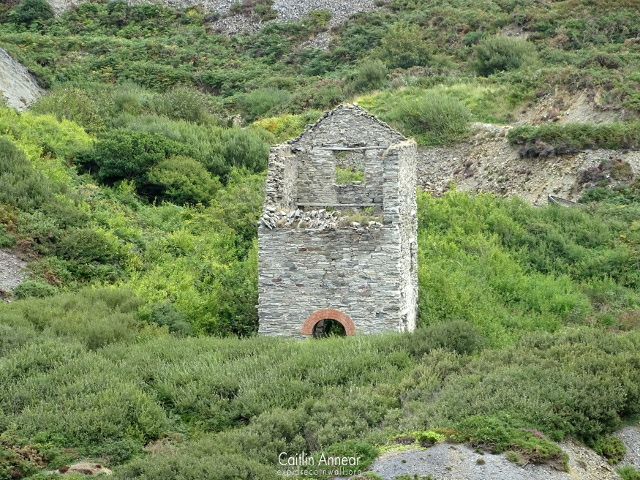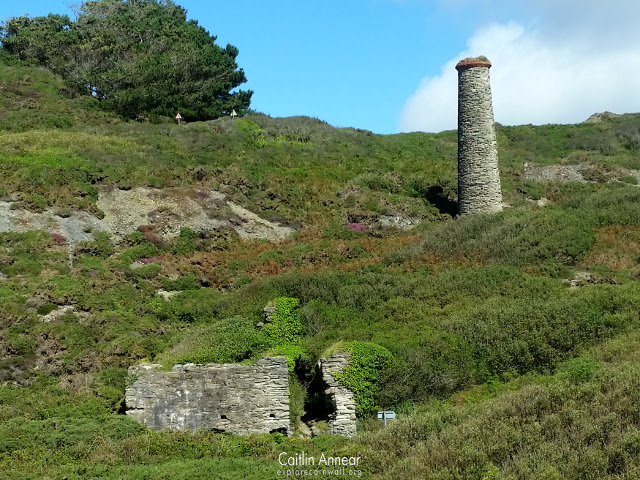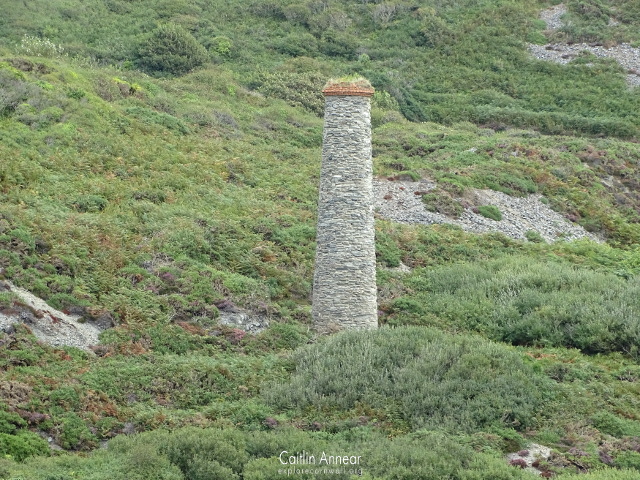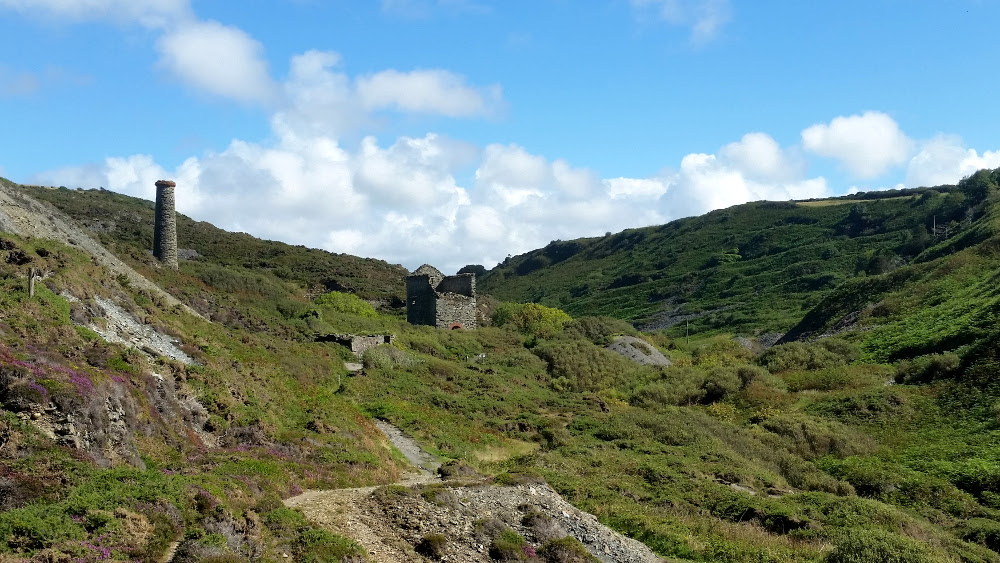Just up from the beach in Trevellas Coombe are the remains of a small mine named Blue Hills.

Blue Hills was formed in 1810 out of a number of smaller concerns, including Wheal Betsy. This only lasted for nine years before closing again, with the seeing no action until 1858. From 1879 it was amalgamated with its southern neighbour Penhalls; these two mines were connected underground.
Fourteen years later the mines were operating as separate concerns once again, although Blue Hills closed in 1897. During the early 20th century it was included in the reworking of Wheal Kitty.

Blue Burrow (66 fathoms/121m), Engine (96 fathoms/176m), Polyear’s (45 fathoms/82m), Letcher’s (100 fathoms/183m), Wheal Joy and Wheal Betsy Engine (65 fathoms/119m).
Baldu, Pink, Straggler’s and Betsy.
1858-97
2,117 tons (2,150,971 kg) of tin and 2 tons (2,032 kg) of arsenic
1839-61 Wheal Betsy
95 tons (96,524 kg) of tin

The main engine house belongs to a 60″ pumping engine from 1869. This is made entirely of slate, suggesting that the mine didn’t have a lot of money at the time it was built. Just up the valley are the remains of the horizontal whim and stamps, while closer to the beach are what’s left of a waterwheel which also ran stamps.

The whole site is free to access, although the base of the whim/stamps is very overgrown.
There is a very small rocky carpark at Trevellas beach.
Dines, H. G. (1956) The metalliferous mining regions of south-west England. British Geological Survey.
Nance, D. and Brown, K. (2014) A complete guide to the engine houses of West Cornwall. Gloucestershire: Lightmoor Press.
